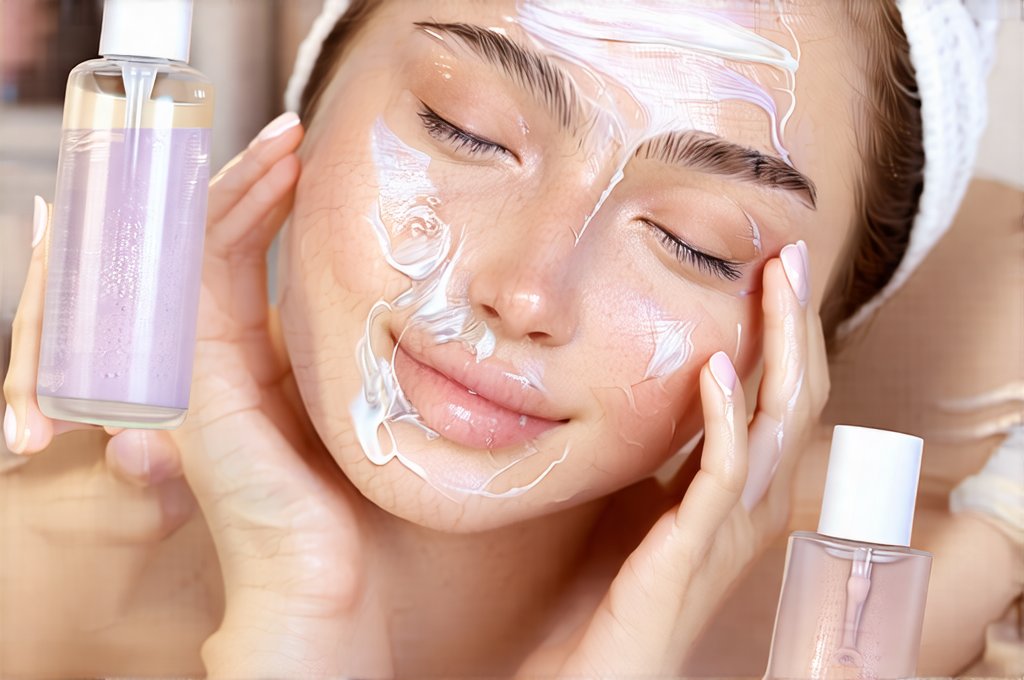The beauty industry thrives on innovation and promises, offering an endless array of products designed to enhance our appearance and boost confidence. However, beneath the glossy packaging and alluring marketing lies a complex world of ingredients, many of which can subtly impact our health in ways we don’t fully understand. While overt allergic reactions are often recognized, there’s a growing awareness of hidden triggers – components within everyday beauty products that may contribute to sensitivities, chronic skin conditions, or even systemic issues over time. These aren’t necessarily toxic substances in large doses, but rather ingredients that can act as irritants or disrupt delicate biological processes when repeatedly applied to the skin or absorbed into the body.
The challenge lies in identifying these hidden triggers because reactions are rarely immediate and often manifest as subtle changes – a persistent redness, unexplained breakouts, increased sensitivity, or even seemingly unrelated symptoms like headaches or digestive discomfort. Furthermore, individual sensitivities vary greatly; what one person tolerates effortlessly might cause significant issues for another. This article delves into the world of hidden triggers within beauty products, exploring common culprits, understanding how they work, and providing strategies to navigate this complex landscape to protect your health and wellbeing. The goal isn’t to demonize all beauty products but rather to empower you with knowledge to make informed choices that align with your individual needs and sensitivities.
Common Culprits: Decoding the Ingredient List
Navigating an ingredient list can feel like deciphering a secret code, filled with unfamiliar chemical names and abbreviations. Many seemingly harmless ingredients are actually potential triggers for sensitive individuals. Fragrance, often listed as simply “fragrance” or “parfum,” is one of the most significant concerns. It’s rarely a single substance but rather a complex blend of dozens – even hundreds – of chemicals, many of which are synthetic and can cause allergic reactions, skin irritation, or respiratory issues. Similarly, essential oils, while often perceived as natural and beneficial, can be potent allergens for some individuals, leading to contact dermatitis or other sensitivities.
Beyond fragrance, certain preservatives used to extend shelf life can also trigger adverse reactions. Parabens, phthalates, and formaldehyde-releasing preservatives are frequently cited concerns, although their use is becoming more regulated in many countries. Even seemingly benign ingredients like alcohol denat (denatured alcohol) – commonly found in toners and astringents – can be excessively drying and disruptive to the skin barrier, especially for those with sensitive or dry skin. Finally, certain emulsifiers and thickeners, while necessary for product texture, can also contribute to irritation or clogged pores in susceptible individuals. Understanding these common culprits is the first step toward identifying potential triggers in your own beauty routine. If you’re concerned about recurring issues, it may be helpful to understand what are common UTI triggers as sensitivities can sometimes overlap with other health concerns.
The Skin Barrier & Systemic Absorption
The skin isn’t simply a passive barrier; it’s a dynamic ecosystem with its own microbiome and crucial protective functions. A healthy skin barrier, composed of lipids and proteins, prevents external irritants from penetrating while maintaining hydration levels. However, many ingredients found in beauty products can compromise this barrier, leading to increased permeability and susceptibility to irritation. Harsh sulfates (like sodium lauryl sulfate) used in cleansers strip away natural oils, disrupting the lipid layer and causing dryness and inflammation. Similarly, alcohol-based products can dehydrate the skin, weakening its protective capacity.
Once the skin barrier is compromised, ingredients aren’t just sitting on the surface – they are absorbed into the body. While the extent of absorption varies based on molecular size, concentration, and individual skin condition, it’s now understood that a significant amount of what we apply topically does enter our bloodstream. This is particularly concerning for ingredients with hormone-disrupting properties or those linked to long-term health effects. The lymphatic system also plays a role in absorbing substances through the skin, carrying them throughout the body and potentially impacting various organs and systems. Therefore, prioritizing products that support and strengthen the skin barrier is crucial for minimizing systemic absorption and protecting overall health. It’s important to be aware of early signs of kidney stress as your body processes these absorbed substances.
Identifying Your Personal Triggers
The journey to identifying your personal triggers often requires careful observation and experimentation. One effective method is elimination testing. This involves removing all new or potentially irritating products from your routine and reintroducing them one at a time, carefully monitoring for any adverse reactions. Start with a minimalist skincare regimen using gentle, fragrance-free cleansers and moisturizers, then slowly introduce individual products – waiting at least a week between each addition to assess its impact.
- Keep a detailed journal documenting the products you use, the date of introduction, and any symptoms that arise (redness, itching, breakouts, headaches, digestive issues, etc.).
- Pay attention to seemingly unrelated symptoms; sensitivities can manifest in unexpected ways.
- Consider patch testing new products on a small area of skin (like the inner arm) before applying them to your entire face or body.
Another valuable resource is ingredient analysis. Several online databases and apps can help you decipher ingredient lists, identify potential allergens, and assess the safety profile of different chemicals. Resources like EWG’s Skin Deep database provide ratings based on scientific research, offering a helpful starting point for informed decision-making. Don’t hesitate to consult with a dermatologist or allergist if you suspect you have underlying sensitivities or are struggling to pinpoint your triggers. Understanding the subtle signs of urethritis can also provide context when evaluating unexplained discomforts.
Reading Between the Lines: “Natural” Doesn’t Always Mean Safe
The term “natural” is often used in beauty marketing, but it’s unfortunately not a guarantee of safety or non-irritation. Many natural ingredients can still be potent allergens or irritants for sensitive individuals. For example, citrus essential oils, while naturally derived, are known to cause photosensitivity – increasing the risk of sunburn and skin damage when exposed to sunlight. Similarly, tea tree oil, often marketed as an antibacterial remedy, can trigger allergic reactions in some people.
Furthermore, “natural” doesn’t necessarily equate to ethical or sustainable practices. The sourcing and processing of natural ingredients can have a significant environmental impact, and labeling regulations are often lax, allowing companies to use the term loosely. Instead of relying solely on marketing claims, focus on scrutinizing the full ingredient list and researching the company’s commitment to transparency and sustainability. Look for products that are formulated without common irritants like fragrance, parabens, phthalates, and sulfates, even if they aren’t explicitly labeled as “natural.” Prioritize brands with a strong reputation for quality and ethical sourcing.
Minimizing Exposure & Building Resilience
Once you’ve identified your personal triggers, the next step is to minimize exposure and support your skin barrier function. This involves carefully selecting products that are formulated without those ingredients and adopting a simplified skincare routine. Focus on gentle cleansing, hydration, and protection from environmental stressors like UV radiation. Incorporating barrier-repairing ingredients into your regimen – such as ceramides, hyaluronic acid, and niacinamide – can help strengthen the skin’s protective capacity and reduce permeability.
- Prioritize fragrance-free products whenever possible.
- Choose non-comedogenic formulations to prevent clogged pores and breakouts.
- Limit the number of active ingredients you use at once to minimize irritation.
- Protect your skin from sun exposure with a broad-spectrum sunscreen.
- Consider incorporating probiotic skincare products to support the skin microbiome.
Beyond product selection, lifestyle factors also play a role in skin health. Managing stress levels, staying hydrated, and eating a balanced diet rich in antioxidants can all contribute to a stronger, more resilient skin barrier. Ultimately, building resilience is about empowering your skin to defend itself against external irritants and maintain its natural balance, leading to healthier, happier skin – and overall wellbeing. If you suspect deeper issues may be at play, recognizing the signs of UTI complications could provide valuable insight into your health.





















